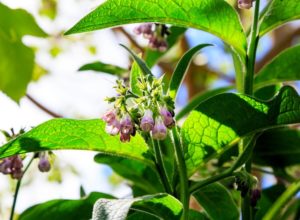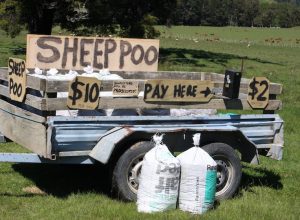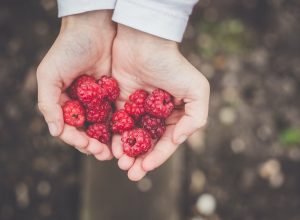June Gardening Guide – Cool Climate
(Image Credit: Wikipedia)
What to Plant in June?
As we approach the shortest day, our focus for planting in the garden shifts from annual vegies to perennials. Rhubarb, asparagus, Jerusalem artichokes, globe artichokes, chives, garlic chives, horseradish, potato onions and shallots can all be lifted, divided and replanted in the next two months.
Fruit and berries are also perennials of course, and deciduous trees and cane fruit are best planted bare rooted in their winter dormancy.
Some annuals are still well equipped to germinate and grow (slowly) in cold winter soil. Spring onions, radishes, broad beans, peas and English spinach are still good for filling gaps.
Maintenance
When planting fruit trees and berries in winter, it’s a good idea not to put too much food – eg compost or manure – in the planting hole. We want the new plants to send their roots out widely, seeking moisture and nutrients. And compost can act like a big sponge, soaking up and holding water in the hole and leading to a lack of oxygen for the growing roots.
The enemy of young fruit trees (besides whipper snippers) is grass. So DO use copious amounts of compost, old manure, spoiled hay, or any other good feeding mulch material on the surface around newly planted trees and berries. You can soak newspaper or cardboard in a wheelbarrow of water, and put that down over any grass around the planting hole. Then cover with plenty of mulch, thick as you like. If you’ve planted trees for espaliering or fan pruning against a wall, it’s a good idea to sheet mulch the whole strip between the trees with this layering technique. You can grow herbs, ground covers like nasturtiums, strawberries, even big crops of leafy greens in the mulch layer for a few years while the trees are still small.
Pests and Diseases
• Don’t let mulch pile up against the trunk or stem of newly planted trees, as it can encourage collar rot. Keep a little gap for airflow. The birds might scratch the mulch around, but you’ll just have to re-arrange it as you do your regular inspections.
• Pick off any mummified fruit from apricots or other stone fruit trees. These mummies contain the spores of fungus like brown rot, which will re-infect fruit in spring and early summer. Good garden hygiene means that these should be taken right away from the garden, and bagged and binned.
Harvest and Preserve
• If you’re dividing rhubarb you’ll be pulling off lots of larger leaves so you can see what’s going on with the crowns. Having a few kilos of rhubarb stems sitting on your kitchen sink is a great problem to have! I make rhubarb and vanilla bean jam – it’s a fave. Or my other favourite use is to make rhubarb fizz or rhubarb syrup.
• For syrup chop the stems and cook with a bit of water till soft. Then strain through fine cheesecloth, measure the volume of syrup, and add an equal volume of sugar. Cook until the sugar is dissolved and the syrup has become just a bit viscous. Bottle, and keep in the fridge for a few months, or process in a hot water batch to keep in the cupboard. Rhubarb syrup is delicious as a cordial with soda water, or drizzled on ice cream, or added to white rum, lime, mint and soda to make a rhubarb mojito!
Permaculture Principles #6: Produce No Waste
Growing your own food at home presents so many opportunities to turn a potential waste stream into the inputs for making things that we need.
• Compost, worms, chickens – the obvious systems for recycling your household food scraps and garden waste into soil conditioner and eggs.
• Animal systems, such as chickens, create a lot of ‘waste’ as manure, but you can capture that with deep litter systems using straw, hay, sawdust, charcoal etc and end up with perfect inputs for some large scale hot composting.
• Its not all about recycling though. The principle also prompts us to think of ways to avoid producing a waste stream in the first place. Take your own bags and baskets shopping. Find producers and suppliers who use and support recycling of containers and packaging.
• Have a ‘scraps’ cookup once a week where you find creative ways to use up all the forlorn bits of leftover food in the fridge or starting-to-get-soft fruit or vegies on the bench.
• I have a friend who collects all the scruffy bits of broken weetbix from the bottom of the packet when its finished. She stores these in an airtight container, and has weighed a whole weetbix so she knows how many grams one weighs. Then when making biscuits that call for a crushed weetbix, she just measures out the required weight of scruff! Genius.
– Christina Giudici, Food in my Backyard (FIMBY)








